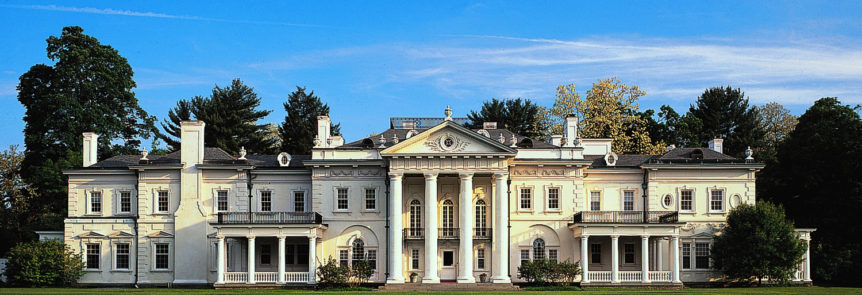
Stone Row on Bard College Campus. Photograph by Peter Aaron/Esto.
Dating to 1860, when it was founded by philanthropist John Bard in association with leaders of New York City’s Episcopal Church, Bard College wins plaudits for its lively liberal arts curriculum. But what strikes the casual visitor is the architectural diversity of the school’s five hundred-acre campus in Annandale-on-Hudson, which features buildings that range in style from the neoclassical to the ebullient modernity of Frank Gehry.

Blithewood on the Bard Campus.
One of the most impressive is Blithewood, a sweeping Georgian revival pile complete with columns, bas-relief garlands, and urn-shaped finials. Built in 1900 on a riverside estate that dates to 1680, the mansion and its tiered formal garden were donated to the college in 1951. Four connected dormitories collectively known as Stone Row, built 1891, make a splendid example of the Collegiate Gothic style. Another landmark is the Tudor revival Ward Manor, erected in 1918, a former estate house purchased by the college in 1963 (along with its picturesque miniature castle gatehouse) and now used as a dorm.

The Richard B. Fisher Center for the Performing Arts at Bard College. Photograph by Peter Aaron/Esto.
While influential architects Robert Venturi and Rafael Viñoly contributed striking designs Clermont’s to new building programs in recent years, their work has been upstaged by Gehry and his Richard B. Fisher Center for the Performing Arts, completed in 2003. Clad in the fluttering steel that became the architect’s trademark after his triumph with the Guggenheim Bilbao, the building seems to dance before its woodland backdrop. It literally stops first time viewers in their tracks.
Bard College, Campus Road, Annandale-on-Hudson, New York 12504; 800-2273265; bard.edu

